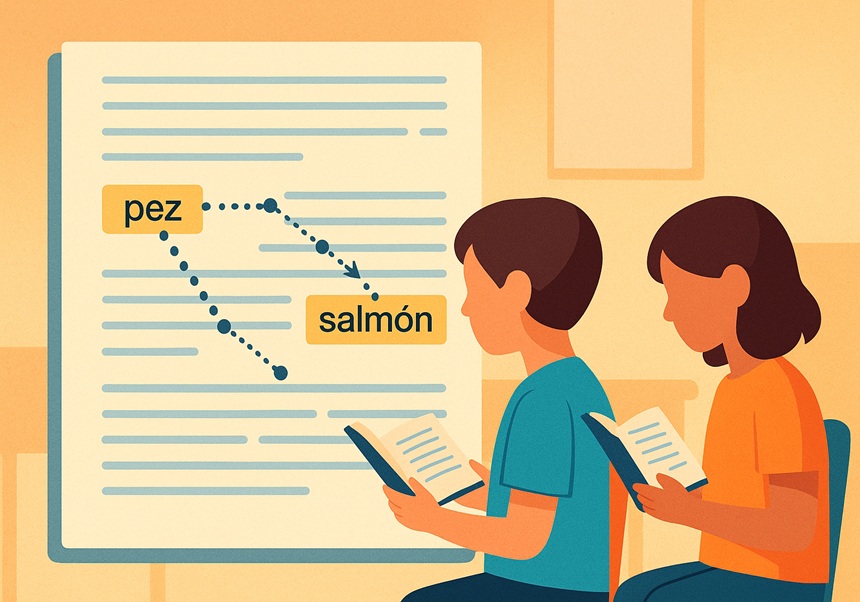
To cite this article: Fajardo, I., Pérez, A. I., Ferrer, A., Pérez-Fuster, P., & García-Blanco, A. C. (2022). Anaphor processing during reading comprehension in students with autism spectrum disorder. Reading & Writing Quarterly, 38(6), 505–525. https://doi.org/10.1080/10573569.2021.1982430
Linking “fish” to “shark”: what anaphors reveal about reading in ASD students
Study context
Understanding a text means linking words that refer back to earlier ones—anaphors—such as “fish” referring to “shark/salmon.” We examined how students with Autism Spectrum Disorder (ASD) make these links during reading, compared with age- and nonverbal IQ–matched peers with typical development (TD) .
What we investigated
We asked when and how anaphor resolution unfolds in ASD, and whether it is shaped by:
-
distance between antecedent and anaphor (near vs. far), and
-
typicality of the antecedent (a typical vs. atypical exemplar of the category).
We compared eye-movement patterns between ASD and TD readers .
How we did it
We recorded eye movements from 24 participants (12 ASD, 12 TD; ages 9–16) while they read short paragraphs manipulating distance and typicality of the antecedent of a category noun (the anaphor). We analyzed early and late eye-movement measures across the anaphor, post-anaphor, and antecedent regions .
What we found
-
Reverse distance effect at the anaphor: in both groups, first fixation and first-pass times were longer when the anaphor was near than when it was far—evidence that linking starts immediately at the anaphor and that far links may be too demanding to resolve online at these ages.
-
Typicality at the antecedent: TD readers revisited typical antecedents less than atypical ones (typicality facilitation), whereas ASD readers did not show this benefit.
-
Overall reading pattern: ASD readers made more but shorter fixations and revisits. Comprehension accuracy was high in both groups (slightly higher in TD).
Overall, anaphor resolution begins early, but typicality helps TD more than ASD in this task .
Why it matters
-
Psychology/Education: minimize distance between antecedent and anaphor in learning materials (or signal the antecedent). Teach categories with typical exemplars first to strengthen semantic links.
-
Speech-language therapy: target category knowledge (typical/atypical), use visual cues that bind anaphors to antecedents, and coach focused rereading to support inferential comprehension in ASD.
-
Classroom & edtech: use highlighting, colors, and arrows/lines that connect related words as real-time scaffolds.
Future directions
Small sample (n=24) with wide age range, Spanish-adapted materials, and ASD participants with nonverbal IQ > 75, which limits generalization. Larger samples, different ages, other anaphor types (e.g., pronouns), genres, and intervention trials combining textual cues and category training are needed to test classroom impact.










